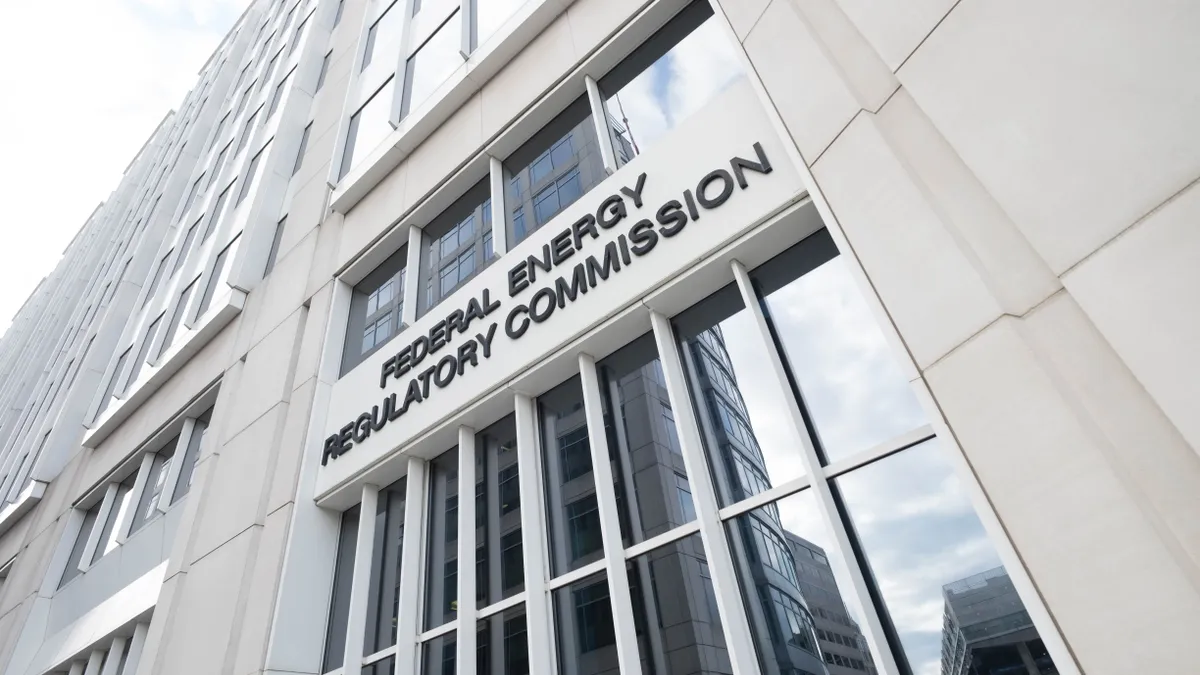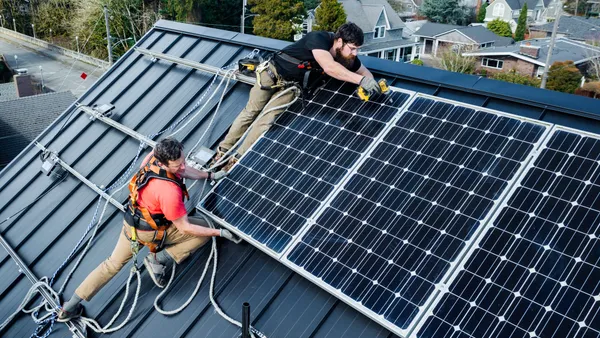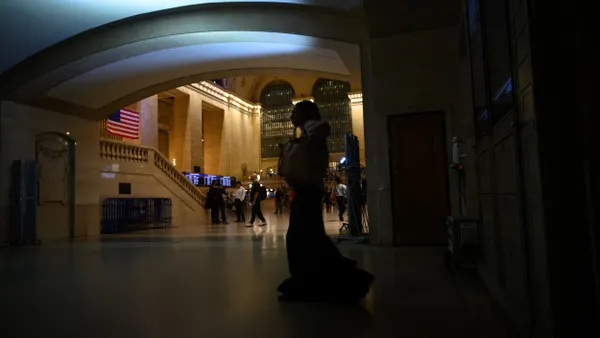UPDATE: Oct. 8, 2019: FERC's proposed PURPA changes were published in the federal registrar Friday. Comments on the proposal are due Dec. 3.
Dive Brief:
-
The Federal Energy Regulatory Commission (FERC) on Thursday proposed rules that would give states more "flexibility" when implementing the Public Utility Regulatory Policies Act (PURPA), a rule credited with enabling small-scale solar deployment.
-
The proposed changes would give states authority to let utilities pay qualifying solar facilities varying rates based on market conditions for the live power supplied to the grid, rather than a fixed projected cost. It also lowers the threshold for qualifying facilities (QFs) in regional transmission markets from 20 MW to 1 MW and modifies the "one mile rule," allowing utilities to argue that facilities less than 10 miles apart could constitute a single facility.
-
Electric utility groups praised the proposed rule, which they said reflected a more modern power market with plenty of cheap natural gas and competitive renewables prices. But renewables groups expressed concern the rule would lessen small solar's ability to compete in the market.
Dive Insight:
States, renewables developers and utilities have awaited changes to the 1978 law that requires utilities to pay QFs for the avoided cost of the power they supply to the electric grid. And FERC Chairman Neil Chatterjee has put reforming PURPA at the top of his priority list since he joined the commission.
"I think renewables can compete in today's energy market without subsidies, without regulations," Chatterjee told reporters after the vote, adding that the law "did its job."
Chatterjee and Commissioner Bernard McNamee voted to move forward on the notice of proposed rulemaking (NOPR), while Commissioner Richard Glick partially dissented.
PURPA was implemented to wean the country off oil and gas dependency and boost competition for alternative energy technologies, in part because of a concern over long-term fossil fuel availability.
Glick, in his dissent, said he was concerned that FERC was overstepping its jurisdiction. PURPA has not been updated since 2005, when Congress under the Energy Policy Act updated the law to allow utility purchase exemptions as long as they were procuring alternative generation through the wholesale markets.
"A significant number of proposals in the NOPR are not necessarily permitted under the statute," he said. "I think they really represent an attempt to administratively gut" PURPA.
Though the market is changing and renewable energy technologies have become more competitive at cost and scale, "that doesn't give us the excuse … for standing in the place of Congress in terms of making a judgment about this particular statute," he said.
State 'flexibility'
Under the proposed rules, states will be able to set prices based on market fluctuations at the time the power is delivered, something solar developers have fought regulators and utilities on in recent months.
In June, the Ninth Circuit Court of Appeals ruled that it could not force Montana regulators to direct the state's largest utility, NorthWestern Energy, to pay QFs under previously set contract prices, which lowered the rate utilities paid developers by $44/MWh because of fluctuating market prices.
The ruling raised concerns over the federal government's ability to implement the federal law at the time.
"PURPA is as much an animal of state law as it is an animal of federal law," Joseph Hall, an energy lawyer at Eversheds Sutherland told Utility Dive. "What increased levels of discretion may or may not mean for utilities and QFs will depend on the state and will depend on the utility."
Contrary to the Montana case was a Ninth Circuit Court of Appeals ruling in California, where the federal court determined that the state was not compliant with PURPA because it did not offer a fixed pricing mechanism, but rather two options with variable pricing consistent with the markets. That was a concern for small solar developers because it made pricing very uncertain.
"You have no way of predicting what the price is going to be a week from now, [or] a month from now," Eric Lee Christensen, counsel for the plaintiffs in the California case, told Utility Dive at the time.
Lawyers said the ruling set an important precedent for less liberal states in the West like Montana and Idaho, where PURPA was sometimes the only mechanism to incentivize small solar deployments.
Now, if the current rule progresses, small solar will likely see the biggest hit in states where regulators and lawmakers "have not emphasized an increased level of renewable procurement over the last decade or so because they feel as though they have sufficient energy and capacity to serve their load," said Hall.
Where PURPA now stands
Electric utilities and their representatives praised the rule for its steps to ensure the market remains competitive and prices are kept low.
"By initiating this important NOPR, Chairman Chatterjee has reaffirmed that there are concrete steps FERC can take to better protect electricity customers from unnecessary energy costs and drive additional investments in renewable energy, all while meeting the commission's responsibilities under the Act," Edison Electric Institute President Tom Kuhn said in a statement.
But solar groups disagreed that the changes would help foster competition, arguing the proposed rule keeps smaller facilities at a disadvantage.
"Rather than focusing on PURPA's goal of ensuring competition, this proposed rule will have the effect of dampening competition and allowing utilities to strengthen their monopoly status," Katherine Gensler, vice president of regulatory affairs for SEIA said in a statement.
Stakeholder comments are due 60 days after the NOPR is published in the federal registrar.
"It's certainly going to be an active docket," said Hall, with discussions likely to focus on whether FERC is giving states too much discretion and whether "you may wind up having too much of a disaggregated set of PURPA programs around the country."














